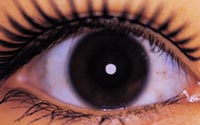Marketers Should Pay More Attention To Native Ads
- by Gavin O'Malley @mp_gavin, May 3, 2013

Are native ads “consumed” the same way Web surfers consume editorial content?
Buoyed by new eye-tracking research from the IPG Media Lab, the
native ad sellers at Sharethrough are making that bold claim.
A study -- which surveyed 4,770 consumers, and used eye-tracking technology to assess the attention of 200 participants --
showed that surfers looked at editorial content for an average of 1.2 seconds, while they viewed native ads for an average of 1 second.
Driven by the novelty of native ads or a genuine
interest in featured brands, the research also found that a slightly higher percentage of people looked at native ads (26%) than original editorial content (24%).
“We know that
marketers’ greatest loss in value is most often inattention to ads,” said Kara Manatt, vice president of consumer research strategy at the IPG Media Lab, and co-author of the new research.
Whether native ads will continue to hold consumers’ attention once their uniqueness wears off is another question, but, as Manatt added: “Past research shows us that neither
overly intrusive nor easily ignored ads are effective … This study validates that we are on the right path to finding that middle ground.”
Pushing scalable native advertising,
Sharethrough has aggressively put forth native-friendly data from a number of reputable research firms. In March, it released some Nielsen-vetted data, which also reflected well on the ad model
formerly known as the “advertorial.”
Per its own research, the IPG Media Lab found that consumers looked at native ads 53% more frequently than banner ads, while native ads were
viewed 4.1 times on average per session versus banner ads, which were viewed 2.7 times on average per session.
Furthermore, 25% more consumers were measured to look at in-feed native ad
placements -- the most common editorial native ad format -- than banner ad units.
Meanwhile, 32% of respondents said the native ad “is an ad I would share with a friend of family
member” versus just 19% for banner ads, while 71% of consumers that had previously bought a product from the advertiser said that the brand was one they “personally identify with,”
versus just 50% for banner ads.


